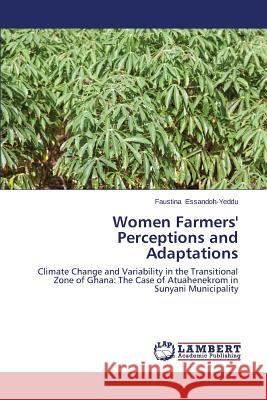Women Farmers' Perceptions and Adaptations » książka
Women Farmers' Perceptions and Adaptations
ISBN-13: 9783659640414 / Angielski / Miękka / 2014 / 60 str.
Climate is changing rapidly over the years and it is affecting all facets of life with critical impact on food security, agriculture, environment and general well-being. Studies reveal that variations in the effects of these fluctuations may have gender disparities and women are severely affected by climate change compared to men as many women are engaged in agriculture than men. Socio-cultural and structural challenges also limit their access to productive resources for sustainable agriculture. Policy makers and all development workers need reliable information for sustainable plans to address this threat. The study has provided firsthand empirical information and approaches aimed at addressing the challenge. The results indicated that women farmers' perception on climate change is linked to variations in temperature, rainfall, wind and drought activities. Majority attributed these changes to the degradation of forest through bad practices. The adaptive measures included changing crop varieties, alternative livelihood activities and use of agrochemicals. Majority of farmers identified lack of income as the driving force for their dependency on rain-fed agriculture.
Climate is changing rapidly over the years and it is affecting all facets of life with critical impact on food security, agriculture, environment and general well-being. Studies reveal that variations in the effects of these fluctuations may have gender disparities and women are severely affected by climate change compared to men as many women are engaged in agriculture than men. Socio-cultural and structural challenges also limit their access to productive resources for sustainable agriculture. Policy makers and all development workers need reliable information for sustainable plans to address this threat. The study has provided firsthand empirical information and approaches aimed at addressing the challenge. The results indicated that women farmers perception on climate change is linked to variations in temperature, rainfall, wind and drought activities. Majority attributed these changes to the degradation of forest through bad practices. The adaptive measures included changing crop varieties, alternative livelihood activities and use of agrochemicals. Majority of farmers identified lack of income as the driving force for their dependency on rain-fed agriculture.











